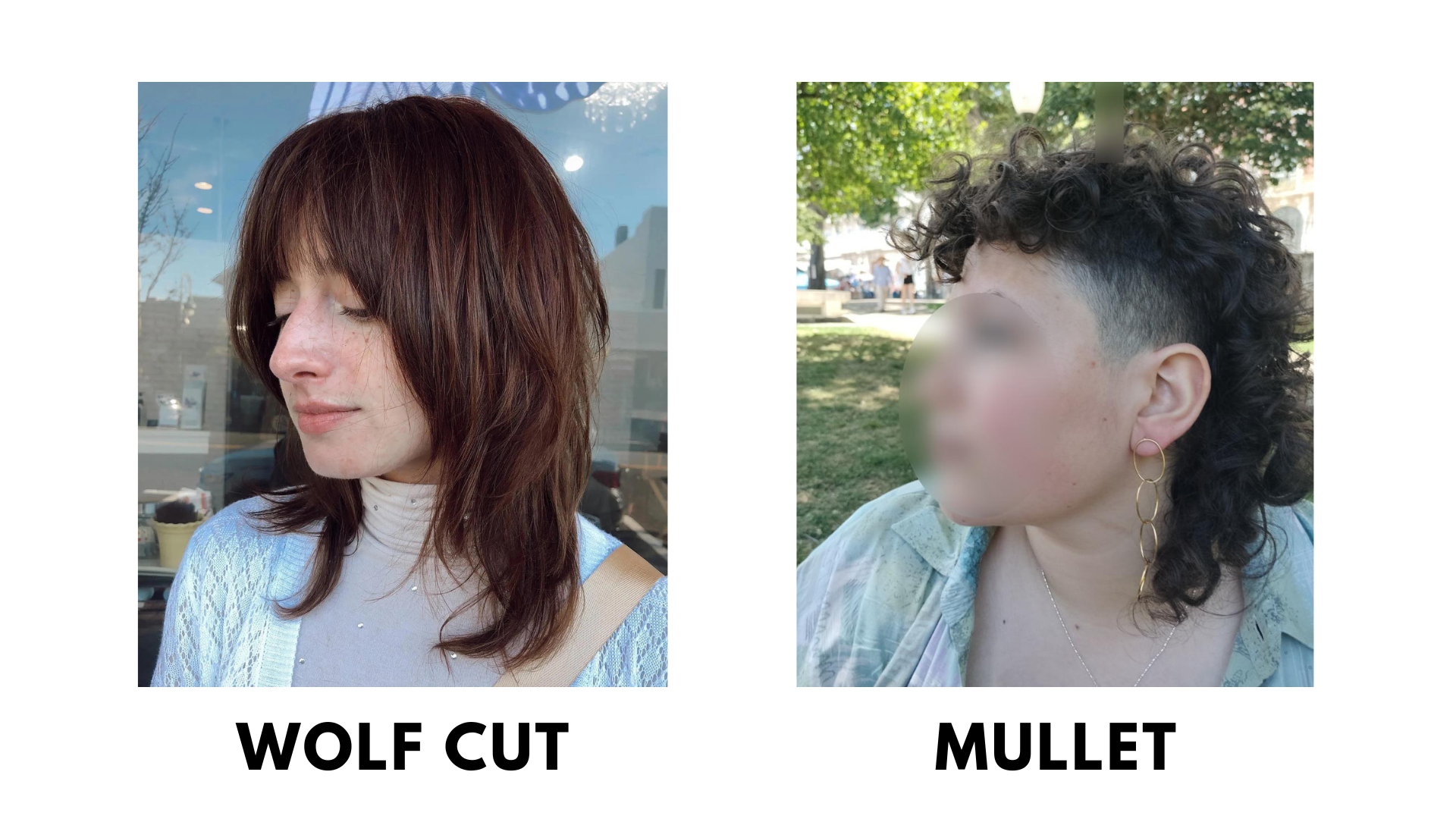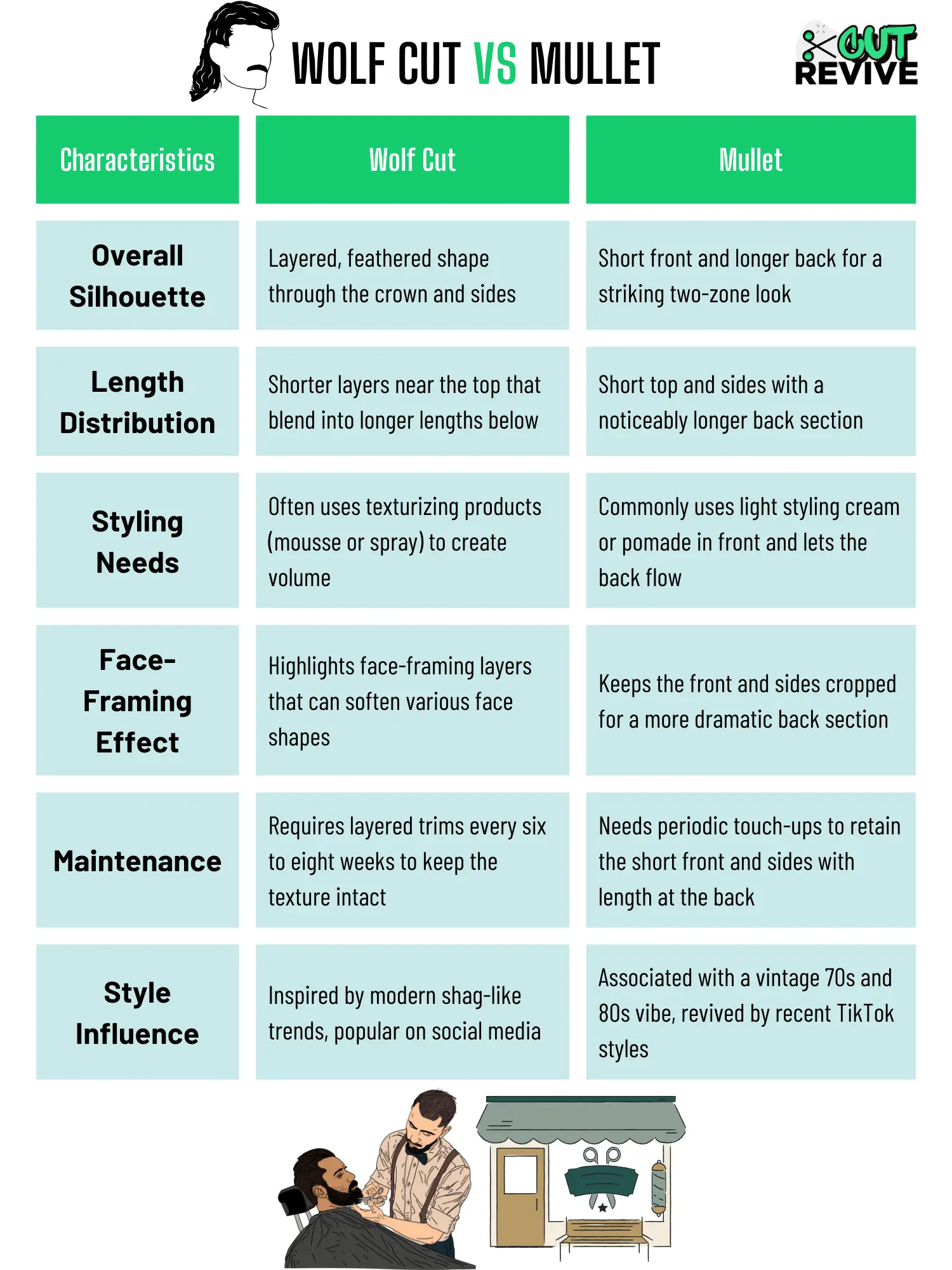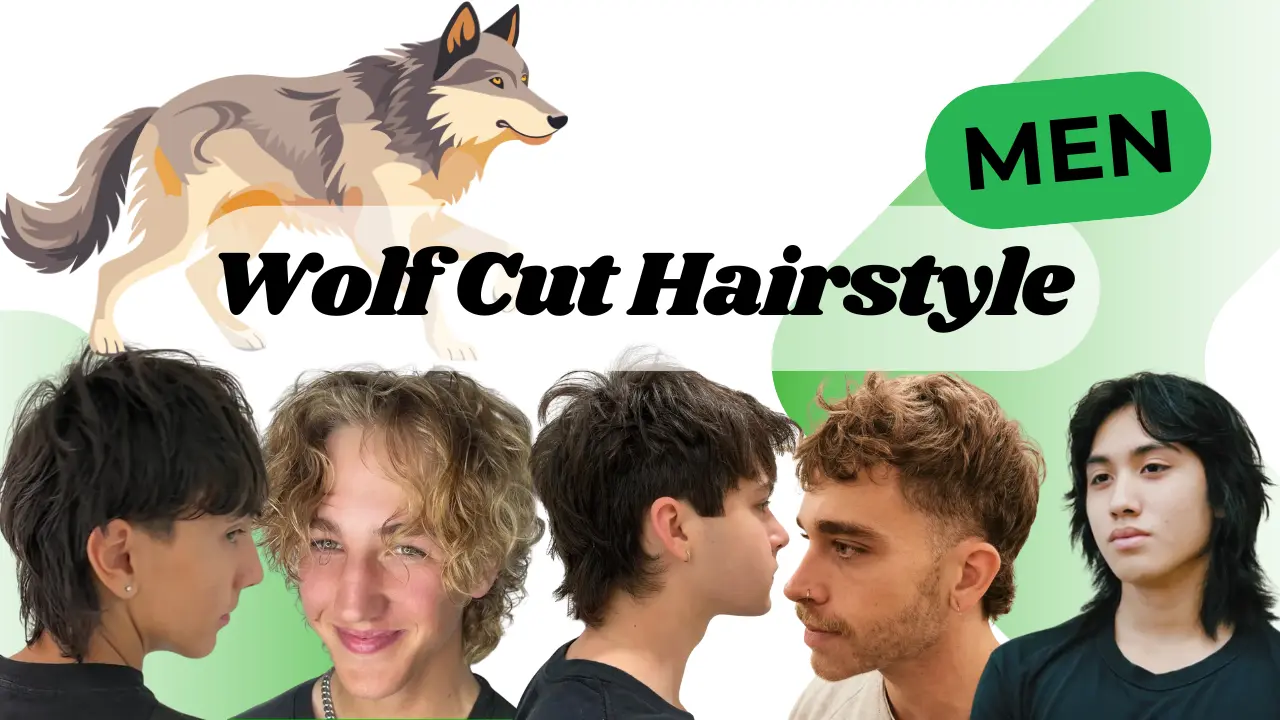In today’s fashion world, hairstyles hold significant power to transform personal style. The wolf cut vs mullet debate has especially gained traction among women (many of whom share before and after videos on TikTok). Both cuts have a strong presence in social media feeds, with TikTok serving as a major platform for hairstyling trends.

This article will break down the wolf cut and the mullet from a female perspective, explaining what makes each option stand out, while also exploring the popular question: is a wolf cut really a mullet?
What Is a Wolf Cut?
The wolf cut is identified by its heavy layering, playful texture, and free-flowing vibe. Many stylists describe it as a hybrid between a shag and classic layered hair. In a female context, the wolf cut often includes soft framing around the face (sometimes referred to as “wispy bangs”) that lends a casual yet edgy appearance. It usually involves layers concentrated near the crown to create volume, along with softer transitions as the cut moves downward.

Women who favor low-effort styling appreciate the wolf cut. It looks excellent when air-dried for a slightly tousled look. In addition, a small amount of texturizing product can elevate its shape without demanding hours in front of the mirror.
Some people wonder if a wolf cut a mullet, because the hair is sometimes shorter at the top and longer in the back. However, the classic wolf cut does not feature as drastic a length difference as a true mullet.
What Is a Mullet?
The mullet is a style distinguished by shorter hair in the front and significantly longer strands toward the back. It became famous during the 1970s and 1980s, although this look has resurfaced among fashion-forward females.

The resurgence owes much of its popularity to TikTok, where women experiment with modern mullets that sometimes include curtain bangs, undercuts, or shaved sides. A key part of the mullet’s appeal is its contrast: the front and sides remain cropped, while the back flows freely.
Female variations of the mullet can lean toward soft, gradual layering or bold, eye-catching length differences. Stylists often customize the cut based on individual face shapes. This approach allows the mullet to be highly adaptable (it can be edgy or understated depending on the chosen technique).
Many style influencers embrace the mullet for its nostalgic links to vintage fashion, which has taken center stage in recent hair trends.
Wolf Cut vs Mullet: Key Differences
Some might assume both cuts are basically the same, because they share layered elements. However, wolf cut vs mullet comparisons reveal clear distinctions. The wolf cut layers are usually spread throughout the hair, creating a feathery silhouette, while the mullet’s signature feature is the dramatic difference between short front sections and long back sections. In the mullet, the division is pronounced and intentional.
Female styling preferences also play a role in these differences. Many women choose the wolf cut for its balanced shape, which can highlight cheekbones or soften strong facial features. By contrast, the mullet showcases two separate zones: the neat top or fringe area and the noticeably longer back. Because of that, the mullet tends to be flashier, while the wolf cut can be tweaked for a more delicate outcome.

Mullet vs Wolf Cut: Which Suits You Best
When deciding between mullet vs wolf cut, it can help to consider your overall style and routine. For instance, the wolf cut often requires layered trims to maintain its shape, although day-to-day styling can be minimal. The mullet, on the other hand, might need regular touch-ups around the front and sides to keep its characteristic silhouette.
The styling journey also depends on hair texture. Straight or wavy hair typically showcases the wolf cut’s layers in a very visible way, while a mullet stands out for its bold proportions. Curly hair can adapt to either style, but some prefer the wolf cut for the controlled volume it lends to curls. Meanwhile, mullets on curly hair can become quite dramatic (in a fun way) if you enjoy the eccentric flair of big hair.
TikTok Craze
Social media platforms have played an enormous role in amplifying these cuts, and TikTok has become a major influencer for both the wolf cut and mullet, particularly among women. Countless transformation videos go viral, often featuring quick transitions from dull hair to a choppy, layered masterpiece. This wave of short-form content inspires many women to experiment with these hairstyles. It also provides a visual reference for how each look can fit into everyday life.
Moreover, beauty gurus on TikTok frequently share product recommendations and styling hacks that make it simpler to maintain a wolf cut or mullet at home. This community-driven momentum keeps both cuts at the forefront of female hairstyle trends.
The Wolf Cut Mullet Hybrid
Some stylists blend the wolf cut’s layering with the mullet’s elongated back. This “wolf cut mullet” hybrid retains the shorter layers on top that produce volume, yet extends length at the back for a true mullet effect. It appeals to women seeking a more rebellious twist on the standard wolf cut while still craving a layered style that is easy to manage.
Transitioning from one style to another (for instance, going from a wolf cut to a hybrid mullet) sometimes involves strategic trimming at the sides and carefully growing out layers at the back. This process can be eased by frequent salon visits or routine DIY shaping at home. Because the hybrid look integrates both styles, it often requires a bit more product usage to keep layers defined and the back portion separated.
Styling and Maintenance Tips For Wolf Cut & Mullet
Some women prefer to keep styling simple. In that case, a lightweight mousse or texturizing cream can accentuate the layers of a wolf cut and bring out its carefree appeal. For mullets, a smoothing cream or light pomade can tame the front, while letting the back remain voluminous. Meanwhile, the wolf cut mullet hybrid may benefit from a combination of these methods to showcase both the top layers and the contrasting length.
Many stylists suggest a trim every six to eight weeks to preserve the structural integrity of either style. This helps avoid that awkward in-between stage where the cut loses its shape. If you prefer highlights, strategically placing them around the crown or fringe area can add extra depth to the layers. For those with extra time, blow drying with a round brush can create salon-quality volume, although air-drying is also an option for a more laid-back aesthetic.
Frequently Asked Questions
- Is a wolf cut a mullet
No. Although the wolf cut has shorter layers near the top and longer pieces below, it lacks the strong short-long contrast of the mullet. The wolf cut’s layering is more gradual. - Which style is easier to maintain
Maintenance depends on individual styling habits. The wolf cut can be straightforward once the layering is in place. The mullet sometimes needs regular touch-ups in the front and sides to maintain its contrast. - Can these cuts suit all face shapes
Many stylists say both cuts can be adapted to various face shapes, especially when the layering is customized. A professional consultation helps determine the best angle, layer length, and fringe positioning for an individual’s features.
Ending Wolf Cut vs Mullet Debate
In the female haircare world, the wolf cut and the mullet are equally exciting. Both styles have seen a massive boost in popularity through TikTok, where quick transformation videos inspire experimentation.
The wolf cut appeals to those who love a slightly more balanced look, while the mullet stands out for its confident short-to-long division. Ultimately, neither cut is inherently superior. Instead, the choice often depends on personal style, hair texture, and the desired level of upkeep.
For women ready to embrace a fresh, head-turning hairstyle, the wolf cut and the mullet both offer unique ways to stand out. With the right approach and consistent maintenance, these cuts can be adapted to fit a range of aesthetics, from casual and laid-back to bold and edgy.


